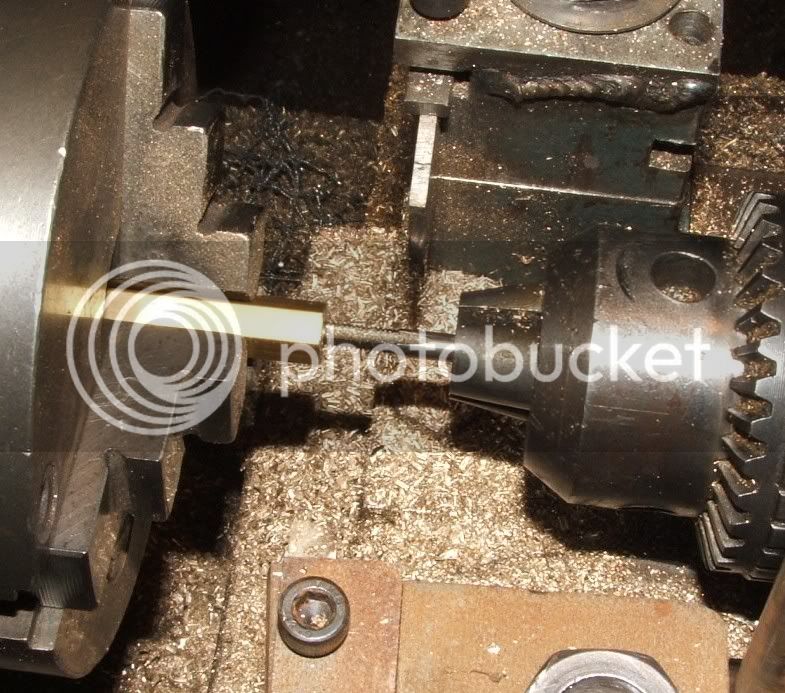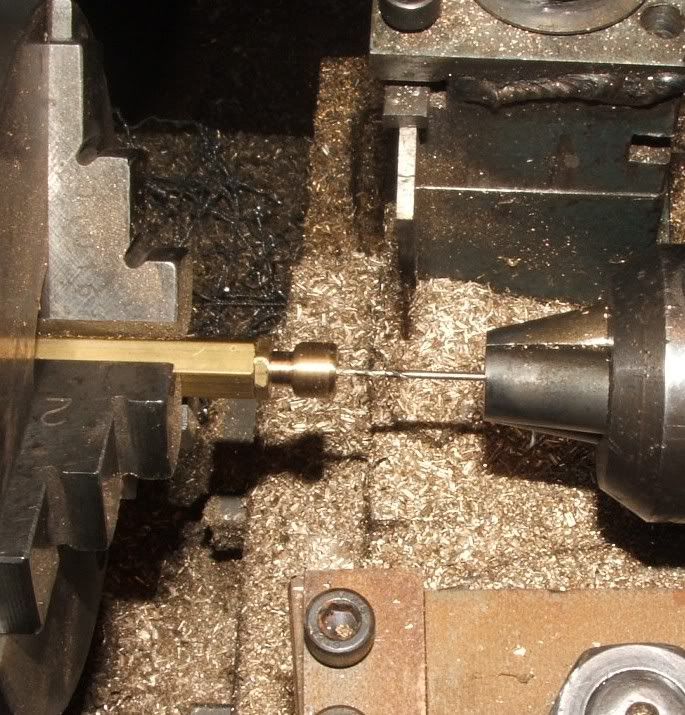tel
Well-Known Member
- Joined
- Feb 8, 2008
- Messages
- 3,293
- Reaction score
- 45
... or The Oily Boid Get The Woim
Had to make a pair of oil cups for the current project this morning, so I thought, since the average engine builder will be called upon to do this several dozen times, that a brief 'how to' might be in order.
First chuck a bit of hex (5/16" in this case) and turn down the end and tread for a suitable mounting size (4BA here)

Next, leaving 1/16" of the hex unsullied, plunge in the parting tool to form the waist

Then turn the hex away for a length long enough for the oiler body + the width of the parting tool

Shape up the bottom of the cup a bit with a file

... and part off to length

Ditto repeato for the second cup, or as many as you want to make, then drill and tap the remaining stub of material to suit the threads you made on the ends

Screw in one of the bodies .....

... centre - deeply with a small centre drill, then drill right thru with a smallish drill (1.2mm here)

Now open 'em out as large and deep as your nerves will allow

Clean 'em up a bit, and you should have a pair of oil cups.

Had to make a pair of oil cups for the current project this morning, so I thought, since the average engine builder will be called upon to do this several dozen times, that a brief 'how to' might be in order.
First chuck a bit of hex (5/16" in this case) and turn down the end and tread for a suitable mounting size (4BA here)

Next, leaving 1/16" of the hex unsullied, plunge in the parting tool to form the waist

Then turn the hex away for a length long enough for the oiler body + the width of the parting tool

Shape up the bottom of the cup a bit with a file

... and part off to length

Ditto repeato for the second cup, or as many as you want to make, then drill and tap the remaining stub of material to suit the threads you made on the ends

Screw in one of the bodies .....

... centre - deeply with a small centre drill, then drill right thru with a smallish drill (1.2mm here)

Now open 'em out as large and deep as your nerves will allow

Clean 'em up a bit, and you should have a pair of oil cups.




































































